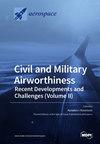基于雷达波谷半径和转弯操纵的隐形飞机三维复杂动态穿透轨迹规划
IF 2.1
3区 工程技术
Q2 ENGINEERING, AEROSPACE
引用次数: 0
摘要
基于准六自由度飞行动态方程,考虑到机动转弯时滚动角增加引起的仰角变化,从而导致雷达截面上升。构建了复杂环境下飞机雷达探测概率的计算模型。通过综合考虑转弯角、滚转角、马赫数、雷达功率因数等飞行参数,定量分析了这些因素对雷达探测概率的影响。研究揭示了不同飞行条件下雷达探测概率的变化规律。研究结果为基于决策树的雷达波谷半径和转弯机动法(RVR-TM)提供了理论支持,为后续智能决策模型的开发奠定了基础。为了进一步优化飞机在复杂环境中的轨迹选择,本研究将理论分析与强化学习算法相结合,建立了一个智能决策模型。该模型采用近端策略优化(PPO)算法进行训练,通过精确定义状态空间和奖励函数,完成雷达威胁场景下隐身飞机的智能轨迹规划。本文章由计算机程序翻译,如有差异,请以英文原文为准。
Stealth Aircraft Penetration Trajectory Planning in 3D Complex Dynamic Based on Radar Valley Radius and Turning Maneuver
Based on the quasi-six-degree-of-freedom flight dynamic equations, considering the changes in the elevation angle caused by an increase in the rolling angle during maneuvering turns, which leads to a rise in the radar cross-section. A computational model for the radar detection probability of aircraft in complex environments was constructed. By comprehensively considering flight parameters such as turning angle, rolling angle, Mach number, and radar power factor, this study quantitatively analyzed the influence of these factors on the radar detection probability. It revealed the variation patterns of radar detection probability under different flight conditions. The results provide theoretical support for the Radar Valley Radius and Turning Maneuver Method (RVR-TM) based on decision trees, and lay the foundation for the development of subsequent intelligent decision-making models. To further optimize the trajectory selection of aircraft in complex environments, this study combines theoretical analysis with reinforcement learning algorithms to establish an intelligent decision-making model. This model is trained using the Proximal Policy Optimization (PPO) algorithm, and through precisely defining the state space and reward functions, it accomplishes intelligent trajectory planning for stealth aircraft under radar threat scenarios.
求助全文
通过发布文献求助,成功后即可免费获取论文全文。
去求助
来源期刊

Aerospace
ENGINEERING, AEROSPACE-
CiteScore
3.40
自引率
23.10%
发文量
661
审稿时长
6 weeks
期刊介绍:
Aerospace is a multidisciplinary science inviting submissions on, but not limited to, the following subject areas: aerodynamics computational fluid dynamics fluid-structure interaction flight mechanics plasmas research instrumentation test facilities environment material science structural analysis thermophysics and heat transfer thermal-structure interaction aeroacoustics optics electromagnetism and radar propulsion power generation and conversion fuels and propellants combustion multidisciplinary design optimization software engineering data analysis signal and image processing artificial intelligence aerospace vehicles'' operation, control and maintenance risk and reliability human factors human-automation interaction airline operations and management air traffic management airport design meteorology space exploration multi-physics interaction.
 求助内容:
求助内容: 应助结果提醒方式:
应助结果提醒方式:


